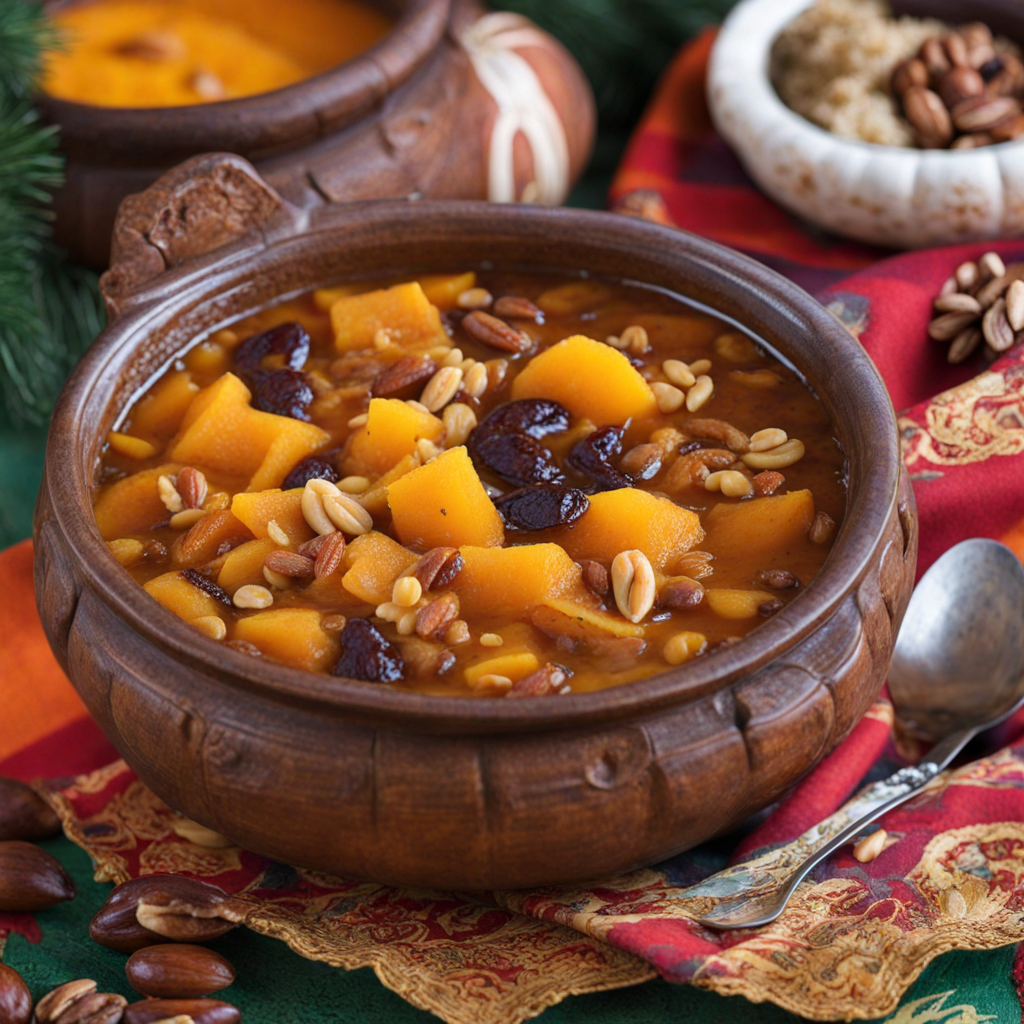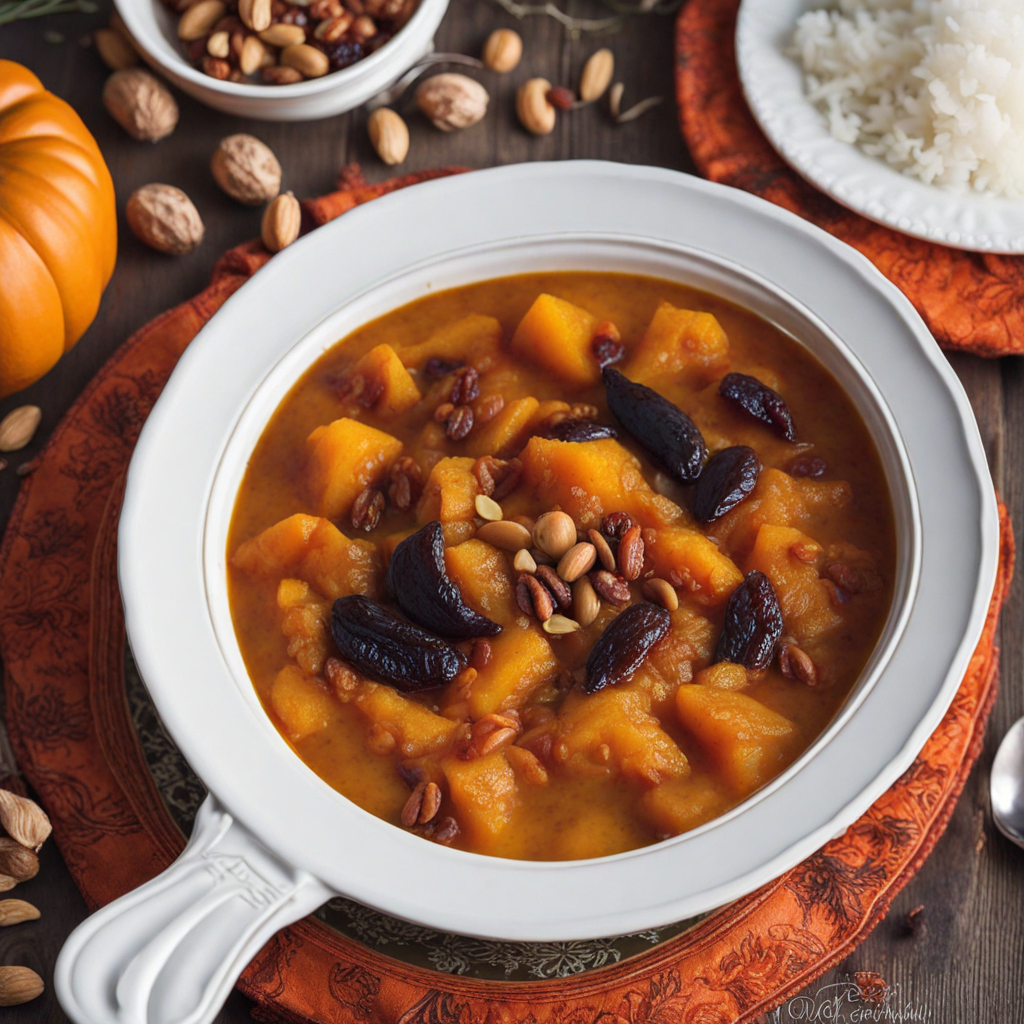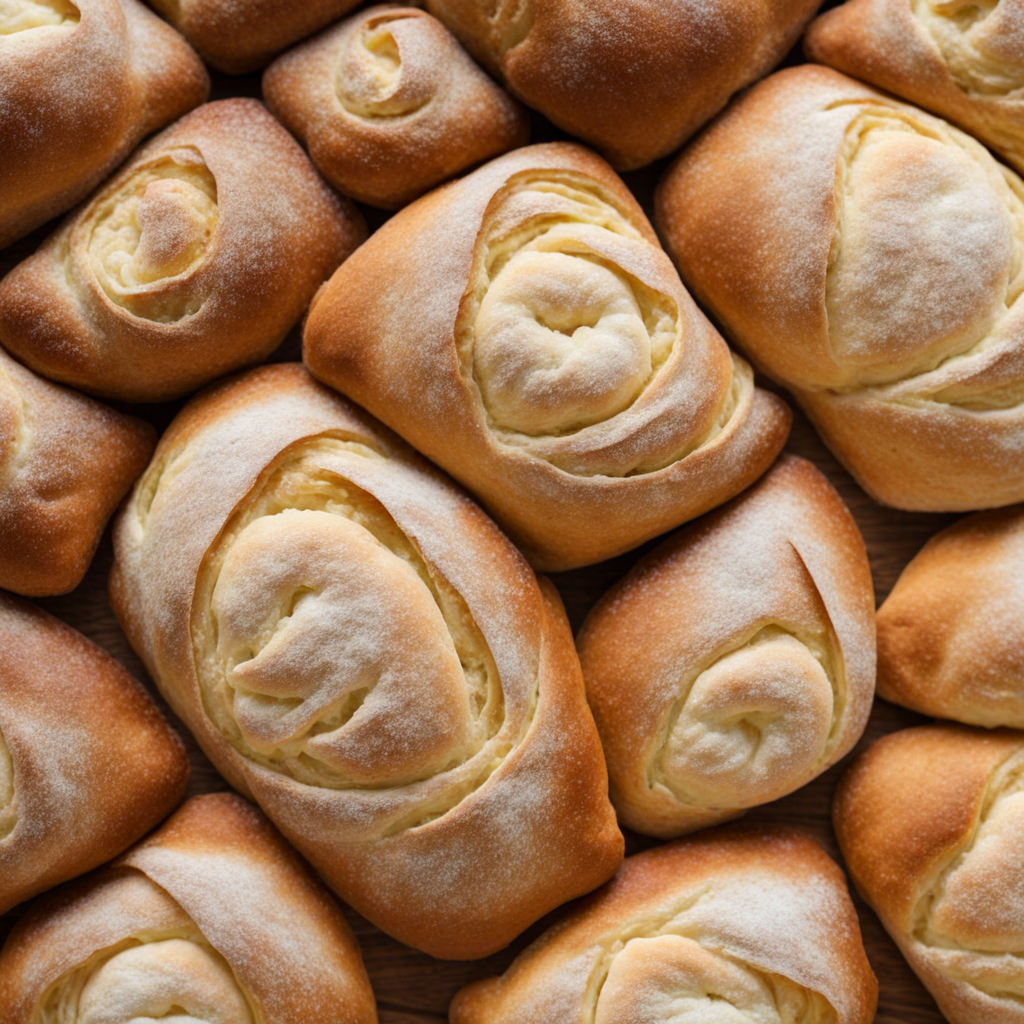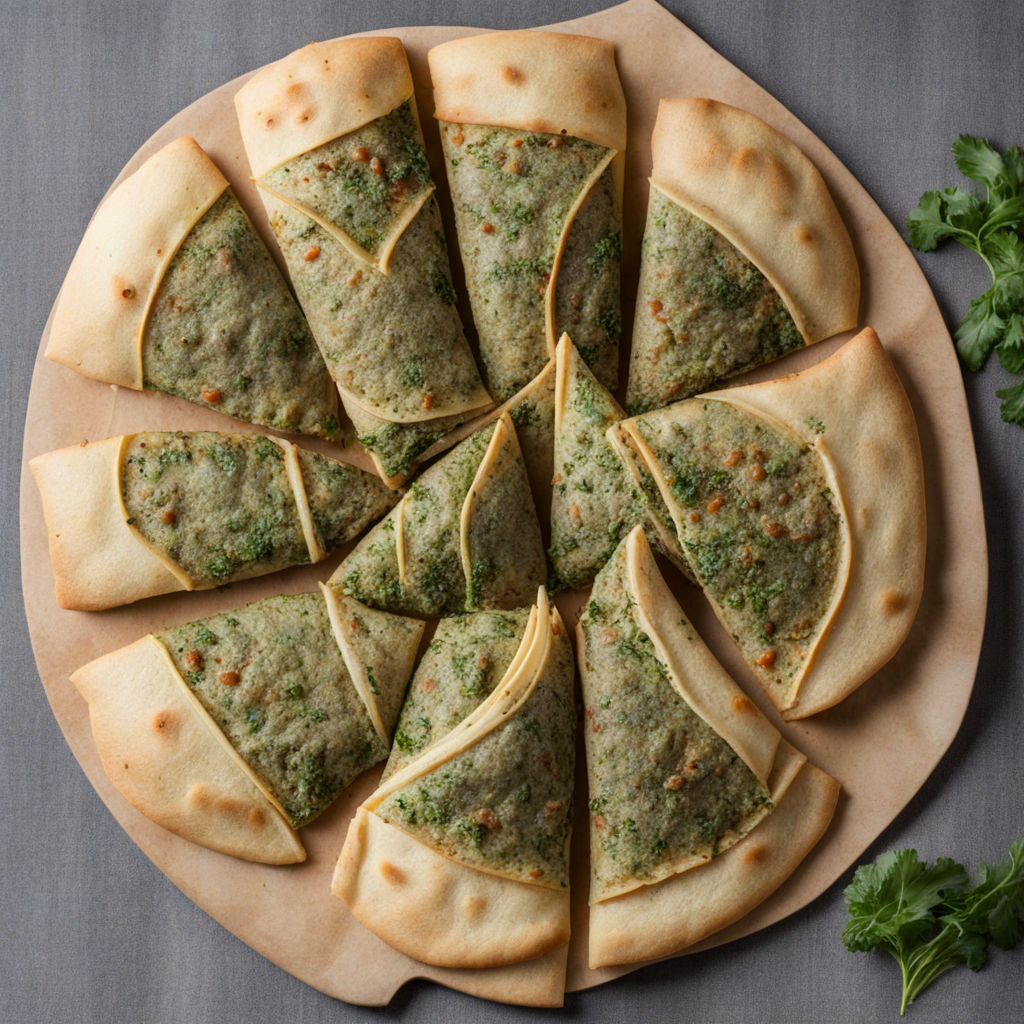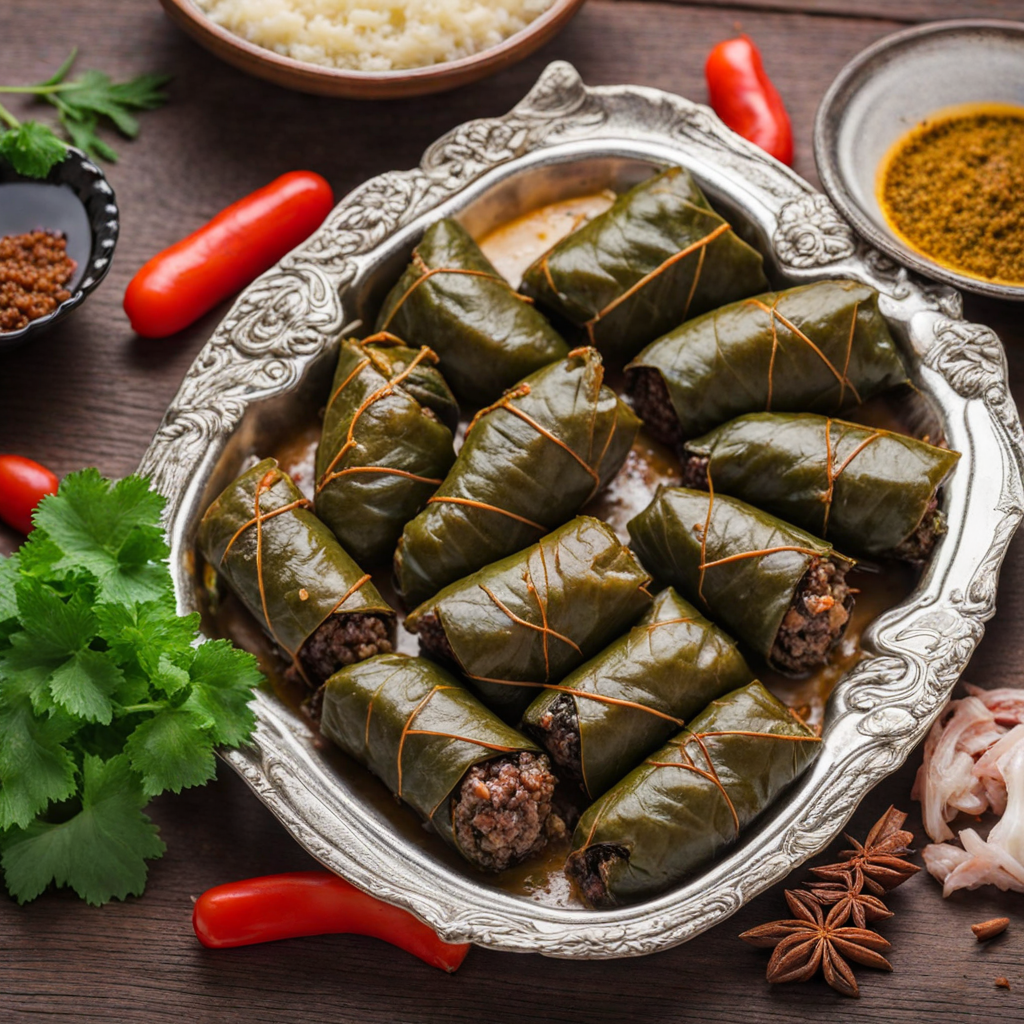Ghapama
Ghapama is a traditional Armenian dish that beautifully showcases the country's rich culinary heritage. This vibrant dish is essentially a stuffed pumpkin, which is hollowed out and filled with a delightful mixture of rice, dried fruits, nuts, and aromatic spices. The pumpkin is then baked until tender, allowing the flavors to meld together, creating a sweet and savory experience that is both comforting and exotic. The golden hue of the pumpkin, combined with the colorful filling, makes Ghapama not only a feast for the palate but also a visual delight on the table. Each bite of Ghapama is a harmonious blend of textures and flavors. The rice absorbs the natural sweetness of the pumpkin while the dried fruits such as raisins, apricots, and sometimes prunes add a chewy richness. Nuts, often walnuts or almonds, provide a satisfying crunch that contrasts beautifully with the softness of the cooked rice and pumpkin. Spices like cinnamon and nutmeg elevate the dish, infusing it with warmth and depth that transport you to the heart of Armenian culinary traditions. Ghapama is often enjoyed during special occasions and festive gatherings, making it a dish steeped in cultural significance. The communal aspect of sharing this dish enhances its appeal, as families and friends come together to celebrate over this sumptuous creation. Whether served as a main course or a festive side dish, Ghapama encapsulates the essence of Armenian hospitality, inviting anyone who tries it to experience the warmth and richness of its flavors.
How It Became This Dish
Origin of Ղափամա Ղափամա, a traditional Armenian dish, has its roots deeply embedded in the rich agricultural practices and culinary traditions of Armenia. The name “Ղափամա” is derived from the Armenian word “գափար,” meaning to “wrap” or “enclose.” This reflects the dish's method of preparation, where rice and various fillings are enveloped within the body of a pumpkin or other gourd-like vegetables. The origins of this dish can be traced back to the early 19th century, but the practice of stuffing vegetables can be found in many ancient cultures, suggesting that the concept has been adapted and modified over centuries. Historically, pumpkins and squashes were cultivated in the fertile plains of Armenia, particularly in regions such as Ararat Valley. These vegetables were not only a staple in the Armenian diet but also an integral part of the vibrant autumn harvest. As the harvest season would often coincide with family gatherings and communal feasts, dishes like Ղափամա became a symbol of abundance and togetherness. The tradition of preparing this dish during harvest festivals highlights its importance as a celebration of the land's bounty. \n\n Cultural Significance The cultural significance of Ղափամա goes beyond mere sustenance; it embodies the spirit of Armenian hospitality and communal bonding. Traditionally, this dish is prepared for special occasions, such as family gatherings, weddings, and religious holidays. The act of cooking and sharing food is a cherished ritual in Armenian culture, and the preparation of Ղափամա serves as a way to foster relationships, celebrate heritage, and pass down culinary wisdom from one generation to the next. Moreover, the dish is often associated with the Armenian identity, especially among the diaspora communities. As Armenians migrated around the world, they took their culinary traditions with them, and dishes like Ղափամա became a way to maintain their cultural roots in foreign lands. The preparation of this dish in homes worldwide serves as a reminder of their homeland, reinforcing a sense of community and belonging among Armenians, whether in Yerevan or Los Angeles. \n\n Ingredients and Preparation The classic preparation of ղափամա involves a few key ingredients, most notably rice, meat (usually lamb or beef), spices, and the pumpkin itself. The dish typically begins with the selection of a ripe pumpkin, which is carefully hollowed out to create a vessel for the filling. The rice is often mixed with sautéed onions, ground meat, and a variety of spices, including cinnamon and allspice, which impart a unique flavor profile. The filled pumpkin is then placed in a baking dish, sometimes surrounded by additional vegetables or herbs, and baked slowly until the pumpkin becomes tender and the flavors meld together. The cooking process allows the rice to absorb the natural sweetness of the pumpkin, creating a harmonious balance between savory and sweet flavors. The dish is often served as the centerpiece of the table, showcasing not only the culinary skill involved but also the aesthetic appeal of the colorful pumpkin. \n\n Regional Variations While the traditional recipe for Ղափամա remains consistent, regional variations exist that reflect the local ingredients and culinary practices. In different parts of Armenia, you may find variations that include other grains, such as bulgur, or the incorporation of dried fruits, nuts, and herbs that enhance the flavor and texture. For instance, in some mountainous regions, nuts such as walnuts are added for a crunch, while in others, dried apricots or raisins may be included to introduce a touch of sweetness. These variations highlight the adaptability of Armenian cuisine, showcasing how local resources and personal preferences can influence traditional recipes. Such diversity in preparation not only enriches the dish itself but also demonstrates the broader culinary landscape of Armenia, where family recipes are often passed down and modified through generations. \n\n Modern Developments In recent years, the appreciation for traditional dishes like ղափամա has seen a resurgence, fueled by a growing interest in authentic culinary experiences and the farm-to-table movement. Chefs and home cooks alike are rediscovering the joys of preparing and sharing traditional Armenian foods, often incorporating modern techniques and presentations while honoring the essence of the dish. Restaurants featuring Armenian cuisine have also begun to showcase ղափամա on their menus, introducing it to a wider audience and elevating its status within the culinary world. This modern revival has not only revitalized the dish but has also sparked conversations about the importance of preserving culinary heritage amidst globalization and changing food trends. \n\n Global Recognition The recognition of Armenian cuisine on the international stage has further contributed to the popularity of dishes like ղափամա. As food enthusiasts seek authentic and diverse culinary experiences, the unique flavors and traditions of Armenian cooking have gained attention. Culinary festivals, food blogs, and social media platforms have played a significant role in promoting this dish, allowing it to transcend geographical boundaries and connect with a broader audience. Food historians and cultural anthropologists have also highlighted the significance of dishes like ղափամա in understanding the complexities of Armenian identity and heritage. By exploring the history and traditions surrounding this dish, they contribute to a greater appreciation of the cultural narratives that food embodies. \n\n Conclusion In summary, the history of ղափամա is a testament to the rich agricultural heritage, cultural significance, and adaptability of Armenian cuisine. From its humble beginnings as a harvest dish to its modern-day recognition as a symbol of communal identity, this dish continues to hold a special place in the hearts and homes of Armenians around the world. As generations embrace the tradition of preparing and sharing Ղափամա, they not only honor their ancestors but also keep alive the spirit of Armenian hospitality and the importance of food as a bridge between cultures and communities.
You may like
Discover local flavors from Armenia


